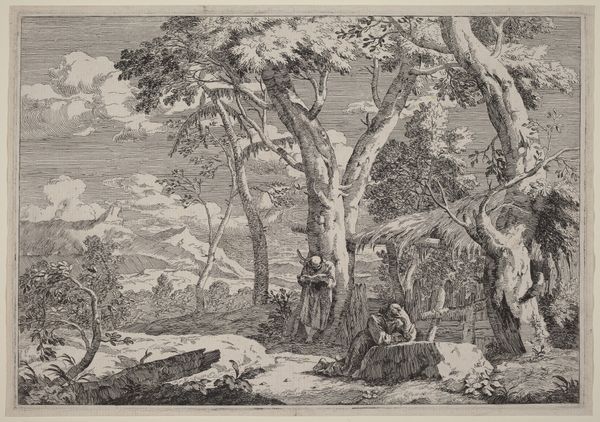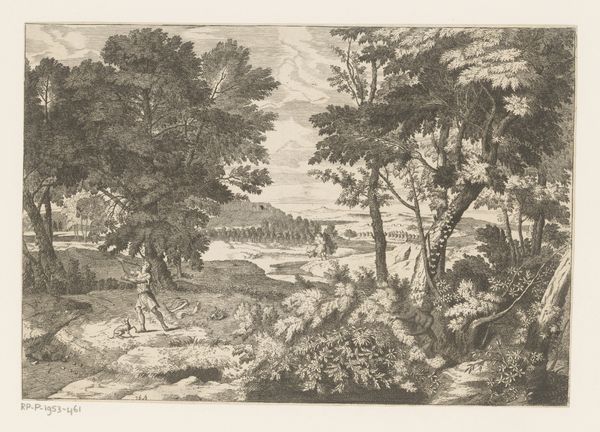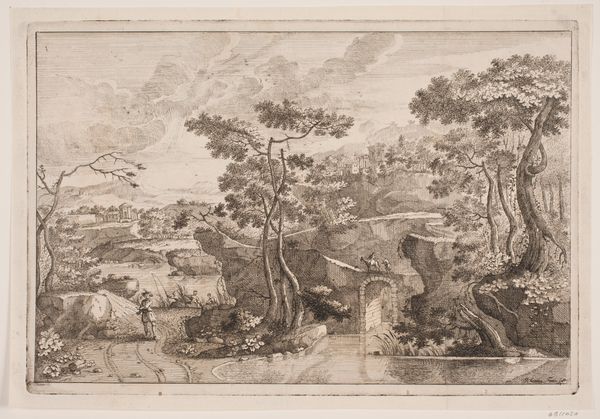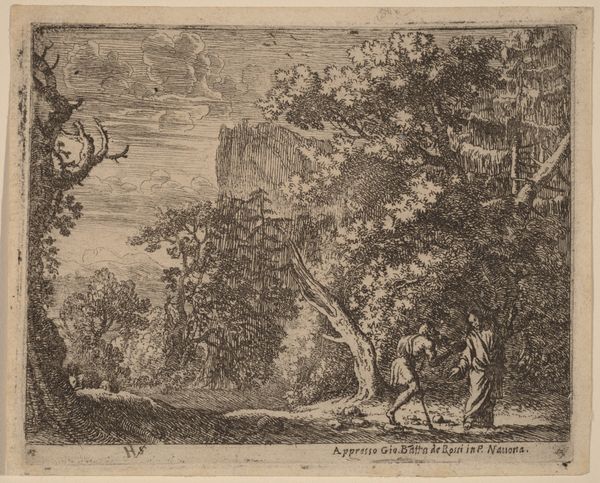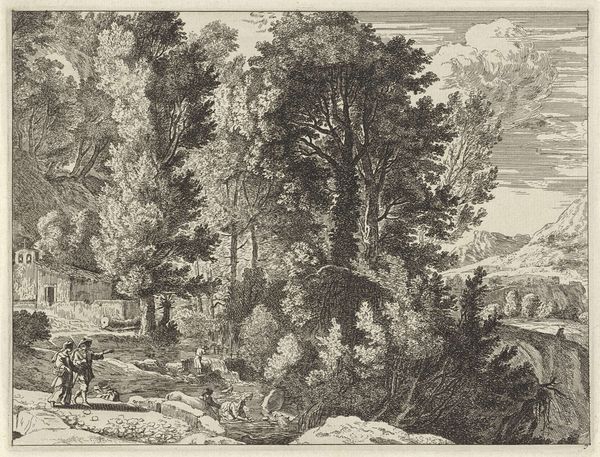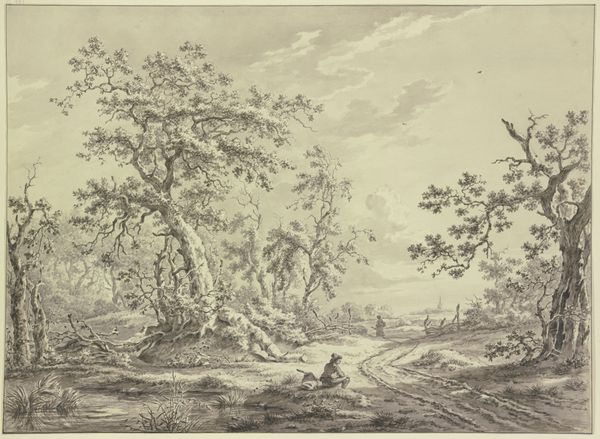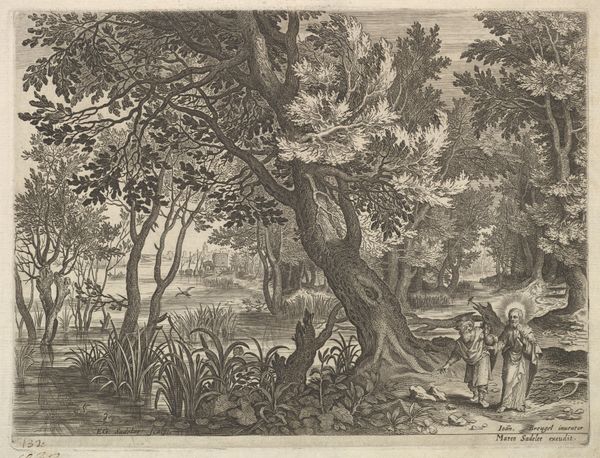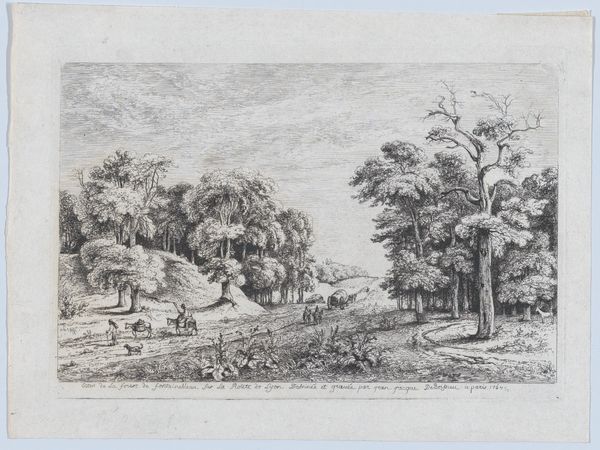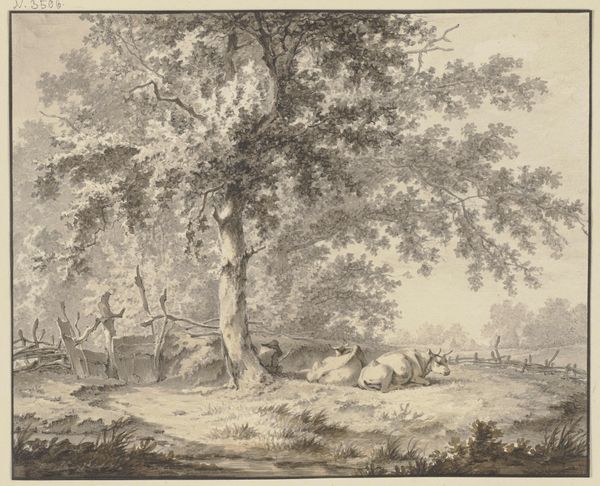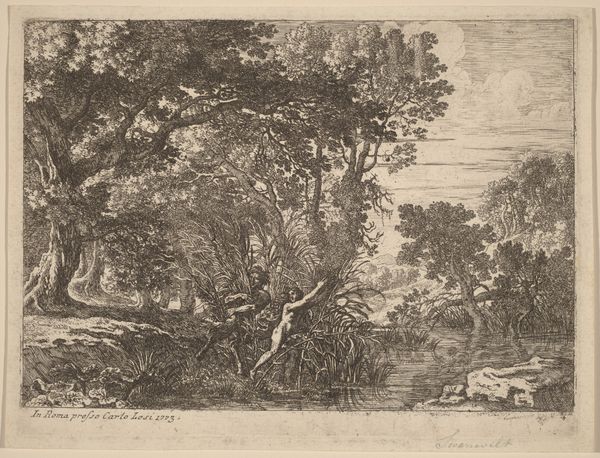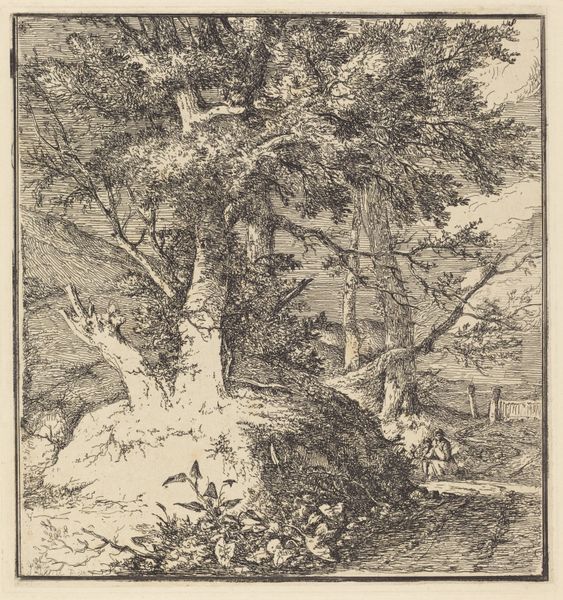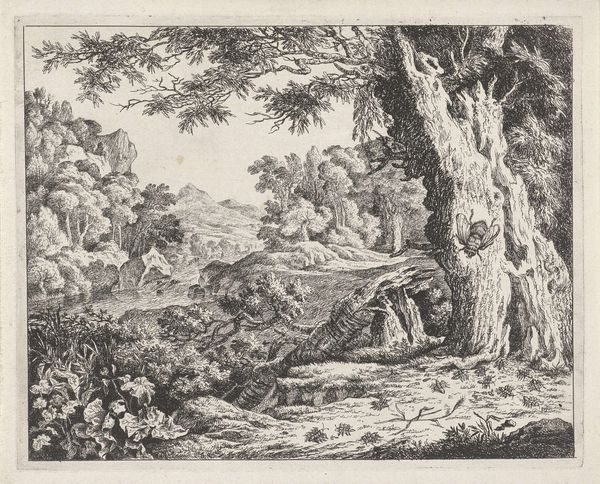
drawing, pen
#
tree
#
drawing
#
baroque
#
landscape
#
pen
Dimensions: sheet: 6 5/16 x 7 13/16 in. (16.1 x 19.8 cm)
Copyright: Public Domain
Editor: Today we’re looking at Johannes de Bosch's "Arcadian Landscape with Figures," dating from between 1725 and 1785. It’s a pen and wash drawing currently held at The Metropolitan Museum of Art. I’m really struck by how this monochrome landscape feels both detailed and dreamlike. What do you see in this piece? Curator: Well, it's important to situate a drawing like this within the artistic and social context of the 18th century. Think about the rise of the Grand Tour and the burgeoning interest in classical antiquity. These Arcadian landscapes often idealized the past, shaping a collective vision of the antique world that, of course, had a potent effect on shaping political identity. Editor: So, it's not necessarily about an accurate depiction, but about constructing an idea? Curator: Precisely. Consider how the landscape itself is composed. Notice how these features - ruins, idealized figures - evoke a certain kind of political power through reference to classical precedence, as did the aristocracy, their residences and estates in relation to society as a whole. Do you think that relationship, between landscape, image and social status might matter here? Editor: I think so. Knowing that this drawing might be about legitimizing authority changes how I see those figures. I’d assumed it was more about the beauty of nature. Curator: Often the function of landscape imagery and the consumption of art intertwines with broader socio-political narratives. Looking closer can give you insight into understanding power dynamics of a given society, beyond simply aesthetics. Editor: That’s a fascinating lens through which to view the work. It makes me rethink the role of landscape art generally. Curator: Exactly! Hopefully it offers an expanded view and some context on how art is intertwined within our understanding of historical structures.
Comments
No comments
Be the first to comment and join the conversation on the ultimate creative platform.
